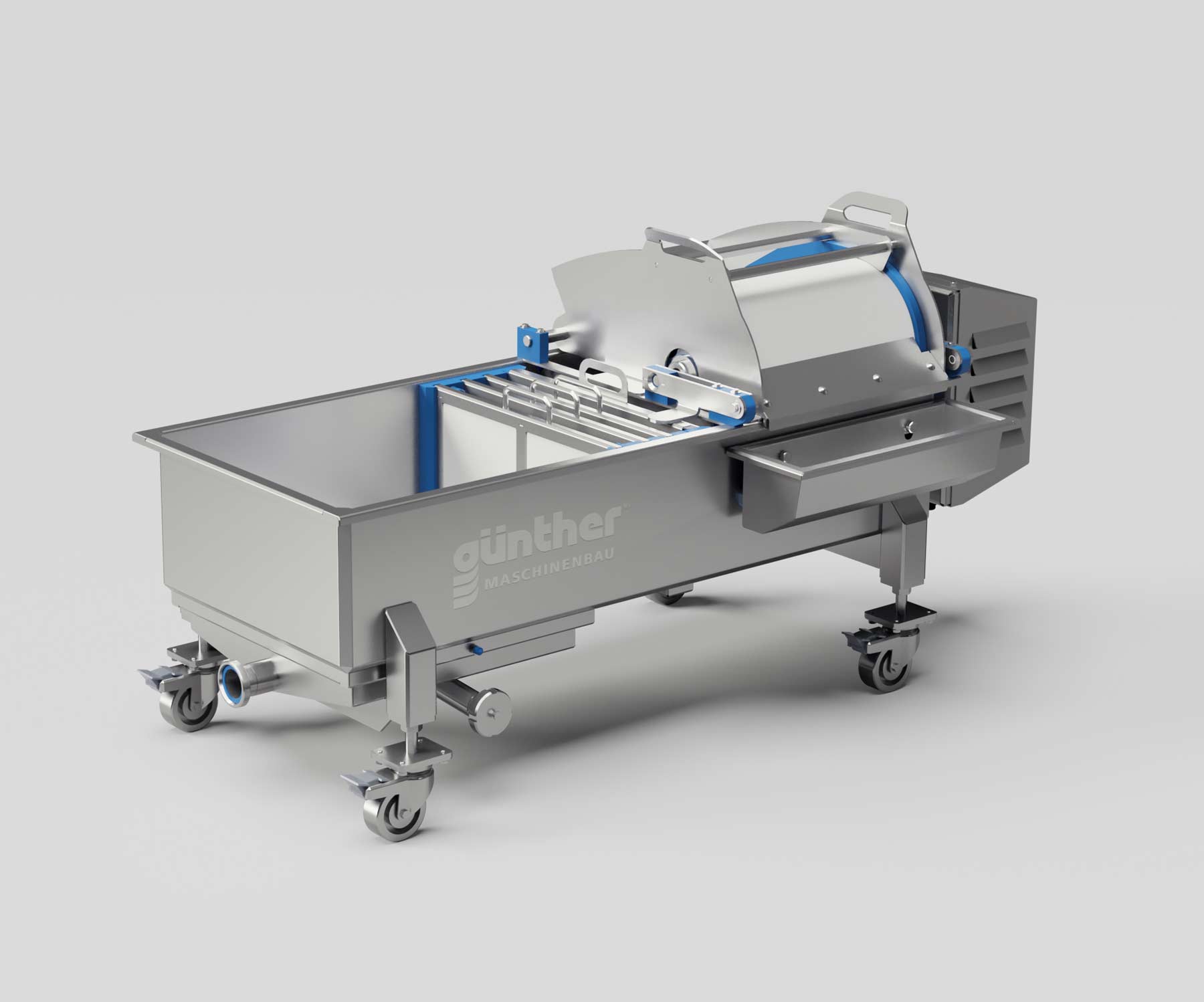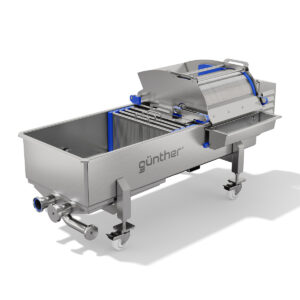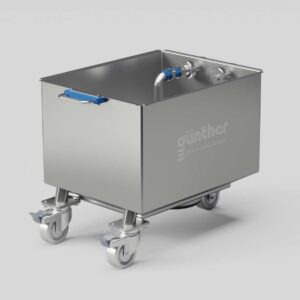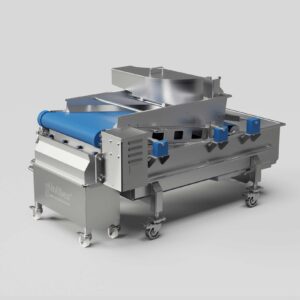Günther Brine Filtration
Günther Brine Filtration
Brine filtration technology is important for many reasons during your brine preparation and injection process. The filtration works by utilizing a series of progressively smaller mesh screens during the brine return process to slowly filter out larger particulates down to very small particulates. This progressive system works to help keep the brine flowing and not clog the first filter. These first few filters can be manually cleaned in a few seconds by removing and spraying off residue with a water hose and placing back into the proper slot. There’s also a small mesh final filter prior to the centrifugal pump which can be cleaned in a very short time by removing a cap and pulling the round mesh filter from the cavity and sprayed with a water hose. This task can be performed between breaks.
Importance
Brine filtration technology is very important for keeping residue buildup from occurring and clogging needles. If proper brine filtration isn’t utilized then improper injection will occur due to clogged or plugged needle exit ports. This improper injection will cause a decrease in yields due to a lower percentage of brine being injected into the product as well as an improper dispersion of functional ingredients throughout the muscle.

Variations
There are a couple Günther Brine Filtration systems available. The first one is used in the small injectors where only a catch net, brine filter canister, and final filter cartridge are used. The larger brine filter systems utilize a rotary drum to remove large particulates and then a series of progressively smaller mesh filter screens are used followed by a brine tank exit screen positioned at the bottom of the tank before flowing to the final filter canister, which is the smallest wire mesh prior to going to the needles. The final filter mesh size is smaller than the needle port size to ensure proper filtration occurs to reduce the chance of needle blockage.




